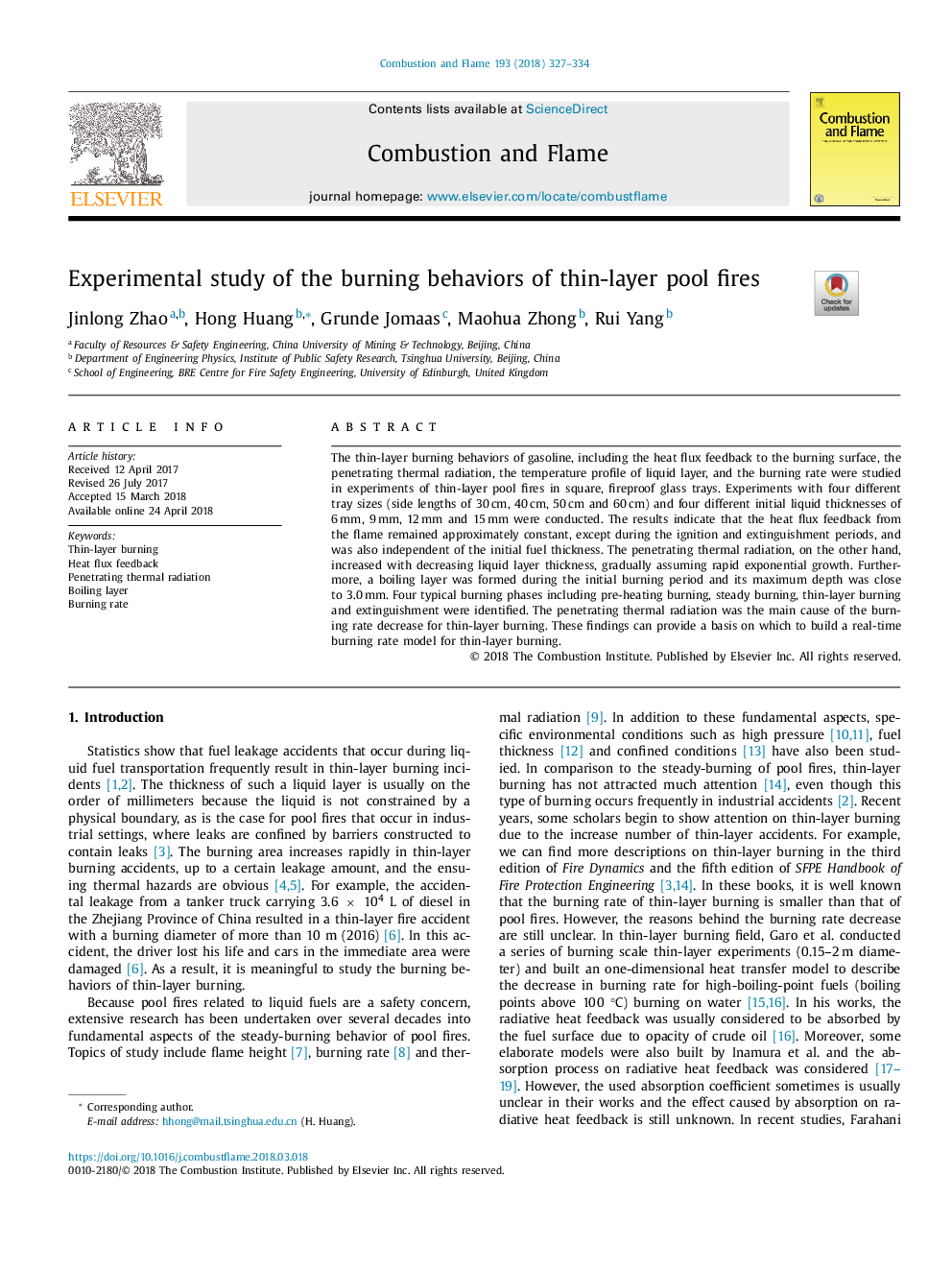| Article ID | Journal | Published Year | Pages | File Type |
|---|---|---|---|---|
| 6593587 | Combustion and Flame | 2018 | 8 Pages |
Abstract
The thin-layer burning behaviors of gasoline, including the heat flux feedback to the burning surface, the penetrating thermal radiation, the temperature profile of liquid layer, and the burning rate were studied in experiments of thin-layer pool fires in square, fireproof glass trays. Experiments with four different tray sizes (side lengths of 30â¯cm, 40â¯cm, 50â¯cm and 60â¯cm) and four different initial liquid thicknesses of 6â¯mm, 9â¯mm, 12â¯mm and 15â¯mm were conducted. The results indicate that the heat flux feedback from the flame remained approximately constant, except during the ignition and extinguishment periods, and was also independent of the initial fuel thickness. The penetrating thermal radiation, on the other hand, increased with decreasing liquid layer thickness, gradually assuming rapid exponential growth. Furthermore, a boiling layer was formed during the initial burning period and its maximum depth was close to 3.0â¯mm. Four typical burning phases including pre-heating burning, steady burning, thin-layer burning and extinguishment were identified. The penetrating thermal radiation was the main cause of the burning rate decrease for thin-layer burning. These findings can provide a basis on which to build a real-time burning rate model for thin-layer burning.
Keywords
Related Topics
Physical Sciences and Engineering
Chemical Engineering
Chemical Engineering (General)
Authors
Jinlong Zhao, Hong Huang, Grunde Jomaas, Maohua Zhong, Rui Yang,
